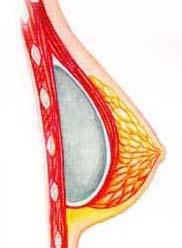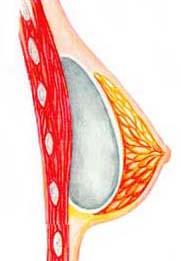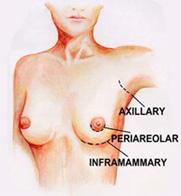BRA Day is an initiative designed to promote education, awareness and access for women who may wish to consider post-mastectomy breast reconstruction.
Breast Augmentation
Breast augmentation is a surgical procedure to increase the size of the breasts. Commonly, breast augmentation is performed following pregnancy or weight loss to restore size, shape and firmness. Breast augmentation should be performed in a way that places a woman’s breasts in balance and proportion with the rest of her body.
Considerations
Before proceeding with breast augmentation surgery, your plastic surgeon will examine your breasts and take into consideration factors such as:
- the size and shape of your breasts
- the quality of your skin
- the placement of your nipples
If your breasts are sagging, a breast lift may also be recommended.
Individual factors and personal preferences will help you and your surgeon determine your appropriate breast size and the location of incisions. Keep in mind that in general, the larger the implant, the greater the risk of complications.
Other considerations include:
-
Placement of the implants and incision location
Breast implants can be placed either under the chest muscle, or between the chest muscle and the overlying breast tissue. Each choice has advantages and disadvantages. The same goes for the choice of the possible incision location through which to place the implant.
Your plastic surgeon will discuss implant placement location and location of the incision with you.
-
Types of implants
There are two types of breast implants available in Canada. The first type are saline implants. These devices have a silicone elastomer rubber shell and are filled with saline solution (salt water). Advantages of saline implants are that they can be inserted through a smaller incision, they may cost less and they will be easily apparent if they leak or deflate. Some surgeons feel that saline implants provide a less natural look and feel than silicone gel implants.
The second type of implant is called a cohesive silicone gel implant. These are made with the same silicone shell but they are filled with a cohesive silicone gel. Advantages are that they often feel softer and more natural than saline implants, however they do require a slightly larger incision and may be more difficult to detect if they break or rupture.
Your plastic surgeon will discuss the type of implants available to you.
-
Breast cancer risks
All women have a risk of breast cancer and you will need to consider this prior to making a decision about whether or not to have implants. Breast implants do not increase the risk of developing breast cancer however they can make it more difficult to perform and read mammograms. Your plastic surgeon will discuss cancer detection with you.
Please click here for information from the American Food and Drug Administration (FDA) on ALCL (Anaplastic Large Cell Lymphoma) and breast implants.
Recovery and possible complications
Breast augmentation is usually performed on an outpatient basis so it is important to arrange for someone to drive you home after surgery and to stay with you the first night following surgery.
After surgery, some discoloration and swelling may occur, but this will disappear quickly. Most residual swelling resolves within a month. After surgery, you can return to work within 3-7 days.
Some potential complications of breast augmentation include:
- infection – although rare, it may require temporary removal of the implant
- reactions to anesthesia
- blood accumulation that may need to be drained surgically.
- changes in nipple or breast sensation – this is usually temporary
- capsular contracture – when the scar capsule (part of the natural healing process) around the implant tightens and compresses the implant. This can occur to varying degrees and can cause discomfort and changes in the breast’s appearance. In such cases, more surgery may be needed to modify or remove the scar tissue, or perhaps remove or replace the implant.
Breast implants are not lifetime devices. They cannot be expected to last forever. Surgery may be required at some point in your life to replace your implants, should they rupture or deflate.




